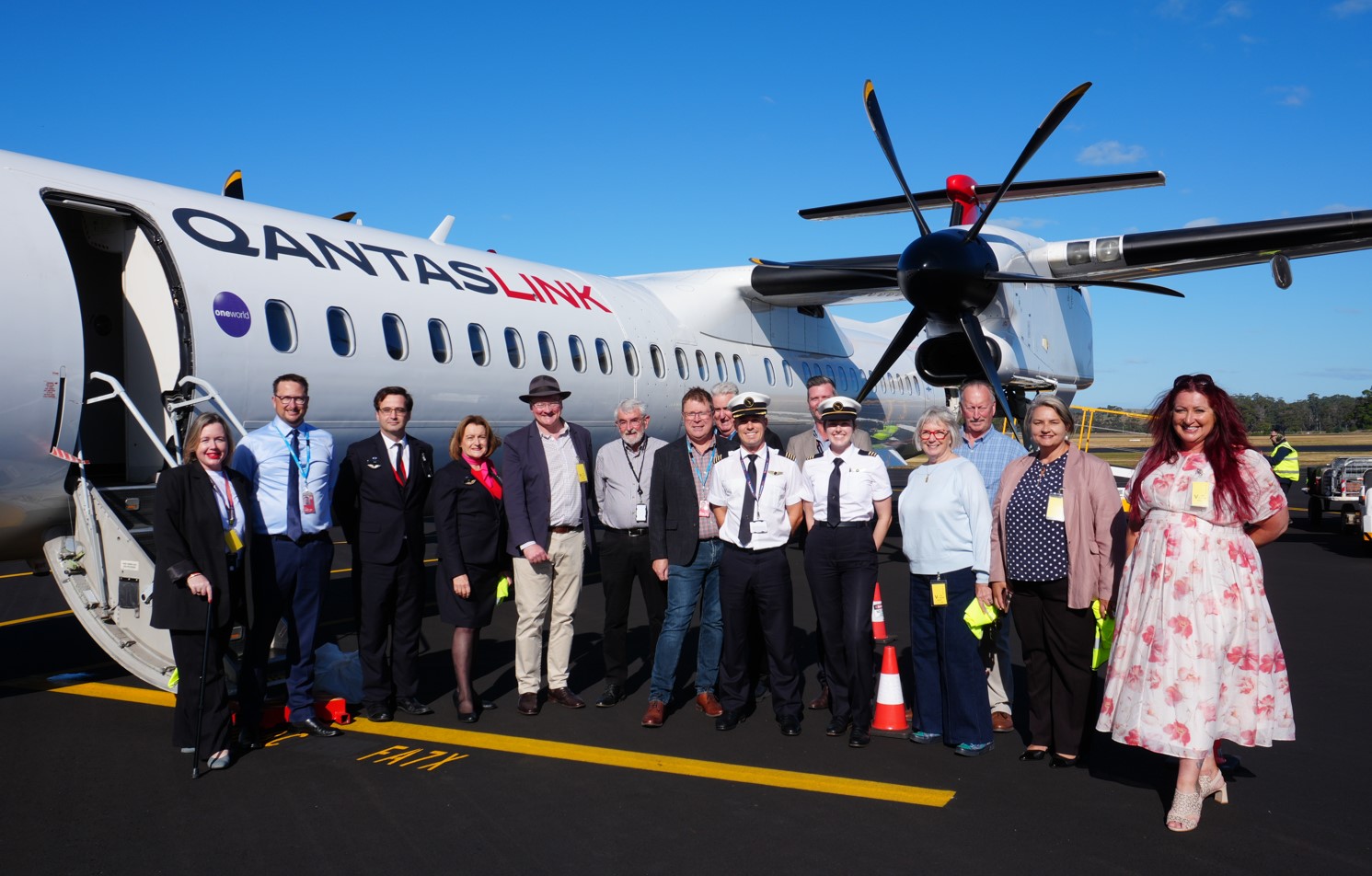Q400 Landing at Burnie Airport
Published on 31 March 2025

The first QantasLink Dash 8 Q400 flight landed at Burnie airport on Sunday ahead of a $665,000 upgrade of the facility to accommodate the larger aircraft.
The Q400 planes provide up to 28 more seats per flight, produce lower carbon emissions and are around 30% faster than the Q300s, which have now been retired by Qantas.
Burnie City Council Acting Mayor, Giovanna Simpson said the Q400 are considered the future-forward aircraft, providing a faster and more comfortable journey.
“Producing less carbon emissions per passenger, it aligns with Council’s 20-year Strategic Plan relating to sustainability and making liveable and local communities,” said Cr Simpson.
“The Q400 addition to Burnie Airport emphasises the confidence and longevity for the future of air travel for our region.”
Burnie airport is set to benefit from a $365,000 grant from the Tasmanian Government to strengthen infrastructure around the bays to accommodate the bigger Q400 aircraft, while the Federal government will spend $330,000 on surface enrichment spray treatment for the entire runway that will improve the runway’s surface condition, provide waterproofing and lengthen the life of the surface.
Business Northwest President, Ian Jones welcomed the arrival of the Q400 service.
“It will provide extra passenger capacity for the tourism industry plus will be needed when the renewable energy projects commence as they will use a lot of Fly In Fly Out (FIFO) workers,” said Mr Jones.
“The Burnie airport is the gateway to the Tarkine area and to have the larger capacity of the Q400 makes it even more available to the mainland eco-tourist market.
“The funding commitments of state and federal governments combined with the Q400 upgrade by QantasLink ensure the region will provide a quality link to mainland Australia.”

Burnie Airport Manager, Tyler Wilson, said the introduction of larger aircraft was poised to significantly stimulate growth in the tourism markets throughout the wider regions of Burnie, Ulverstone, Penguin, Wynyard, West Coast and Circular Head.
“By increasing capacity and improving connectivity to key destinations, these larger aircraft will enhance accessibility for travellers, making the region a more attractive option for both domestic and international visitors,” said Mr Wilson.
“This development will greatly benefit tourism operators and accommodation providers in our region with the Airport being a gateway to Cradle Mountain, Strahan, Stanley and the Tarkine region.”